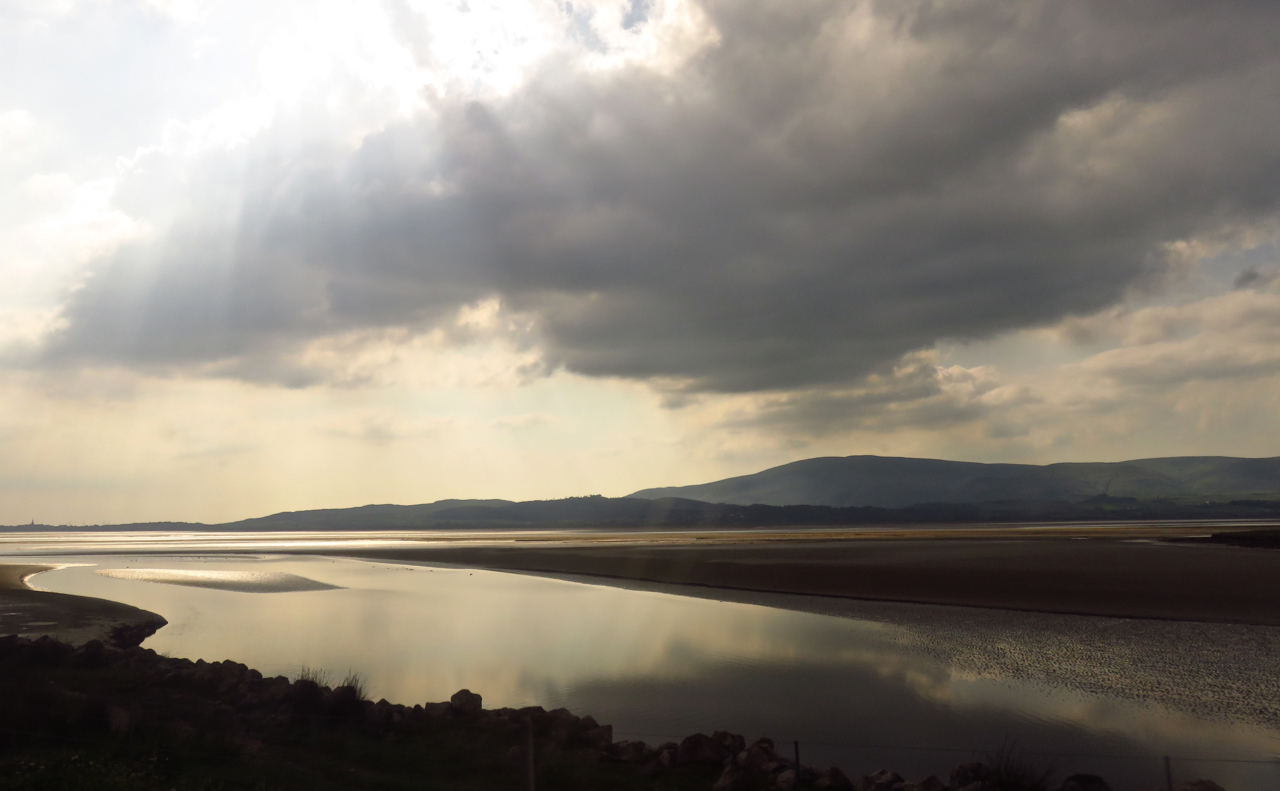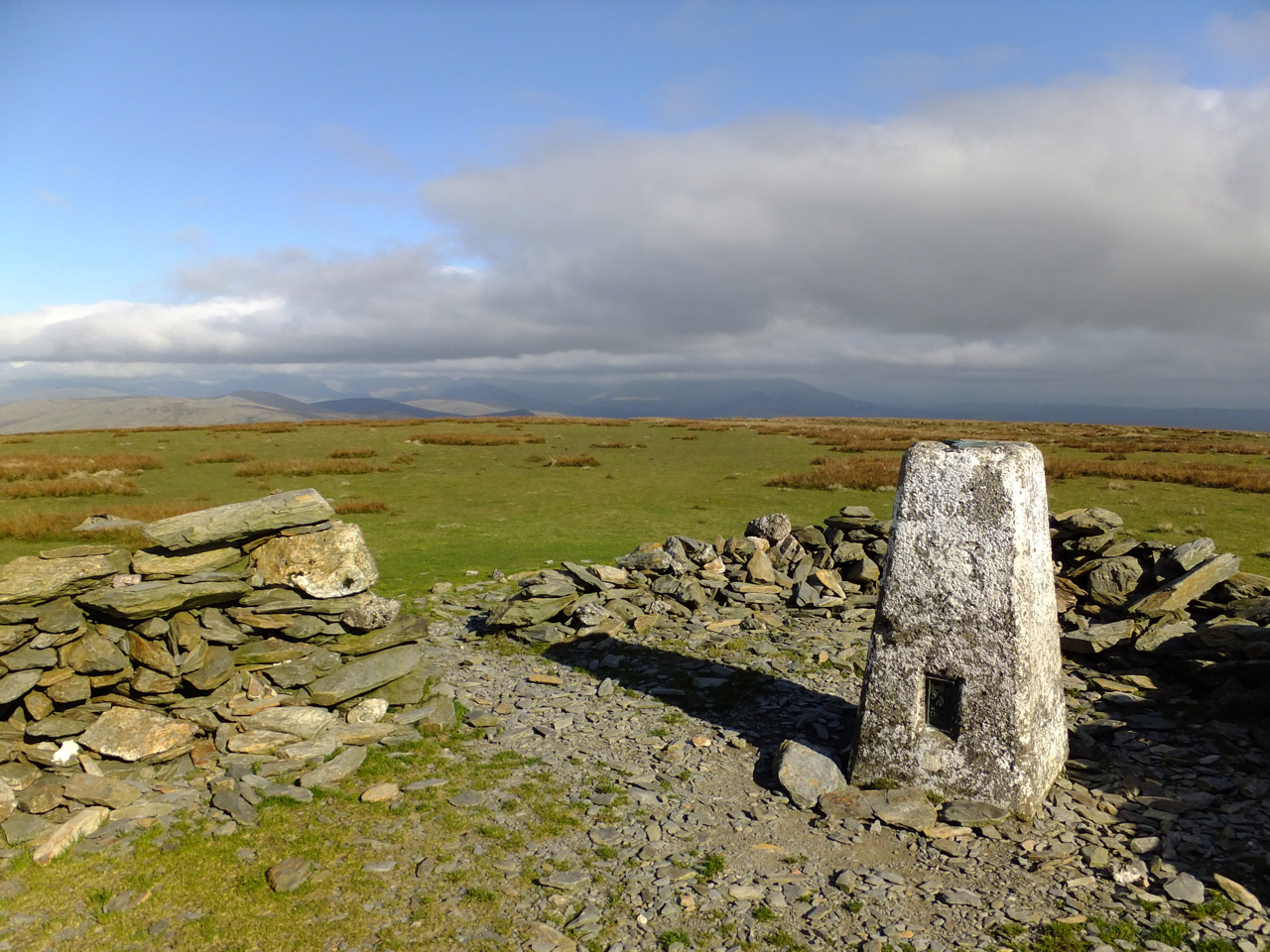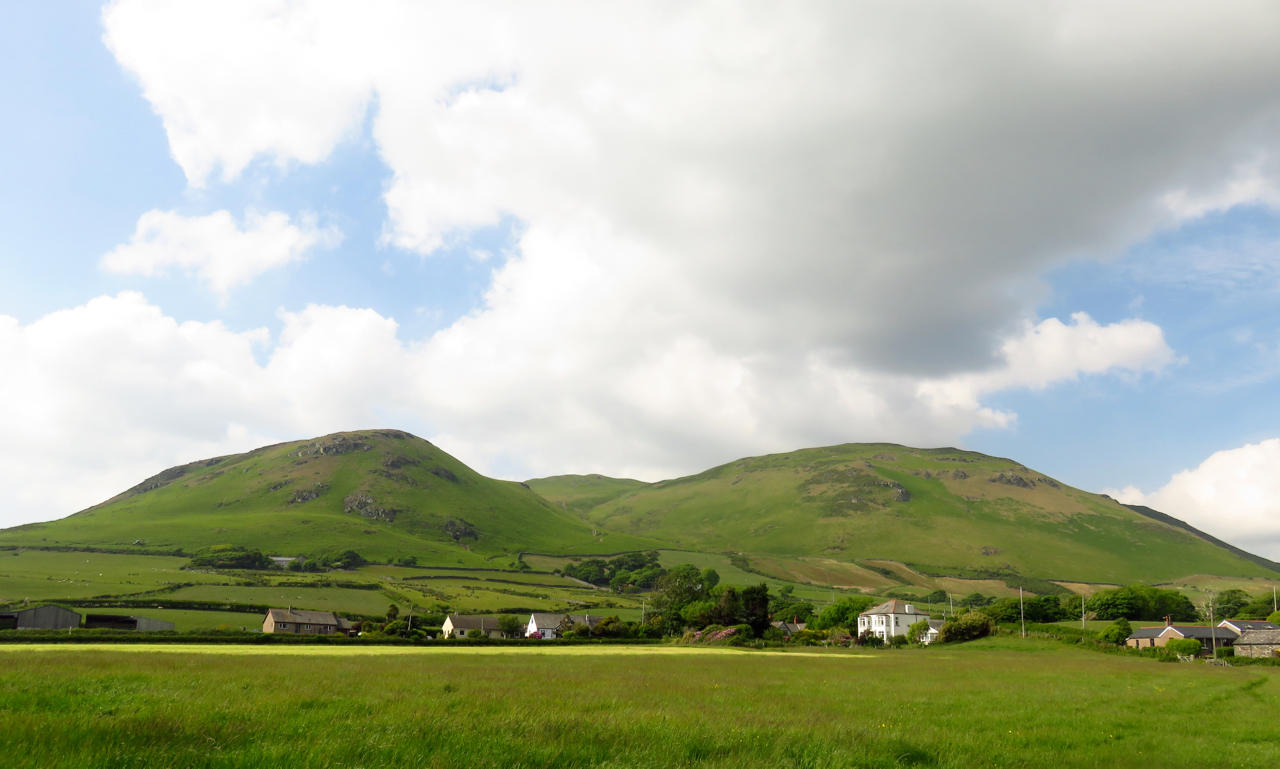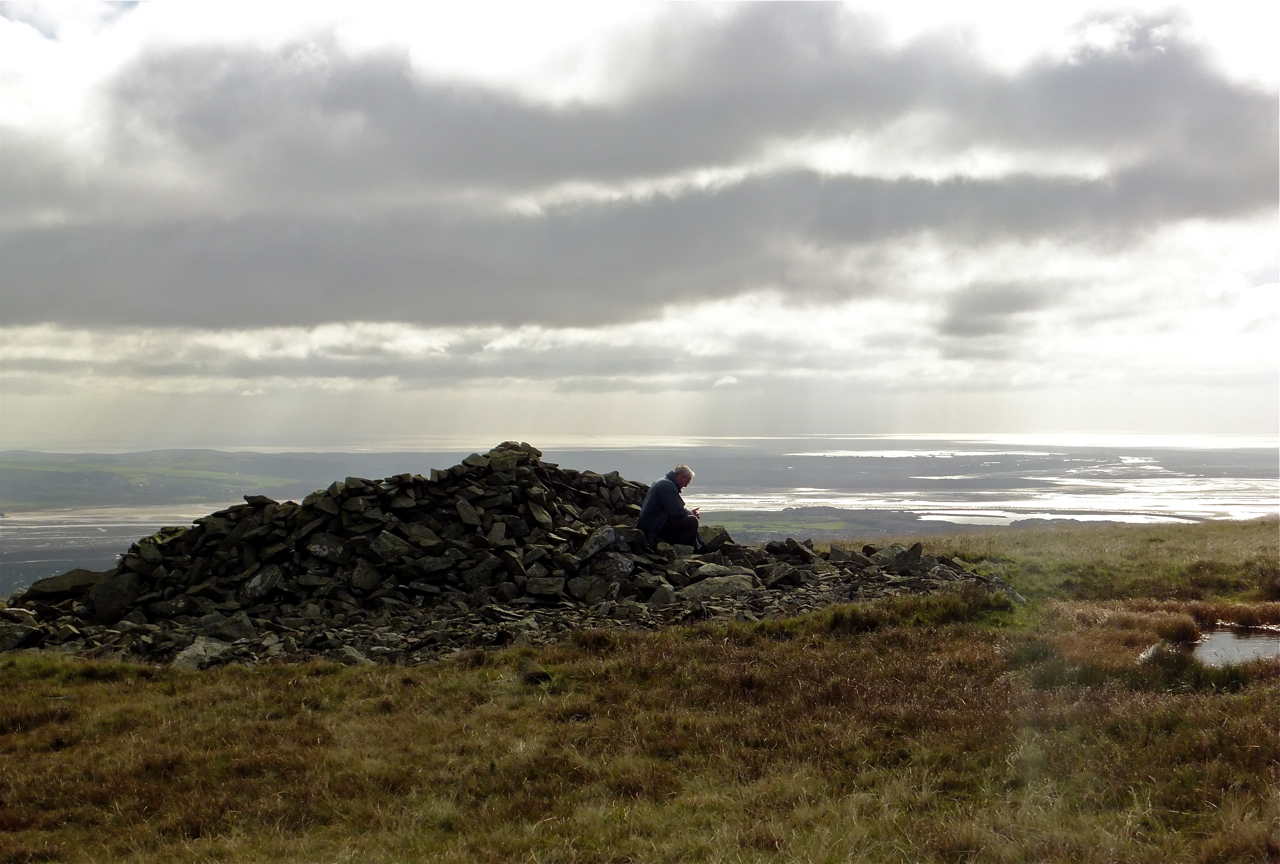Summits: It is said that there are 116 Outlying Fells, but it is not always easy to see where this count comes from. In most cases, the summits that each chapter contained are listed on the title page, but this is not true of Black Combe. Looking in the index, we see that three named summits appear – Black Combe itself (1970’), White Combe (1361’) and Stoupdale Head (1548’), and these are the three which I have counted as forming part of the project.
But this is a fairly arbitrary selection. Stoneside Hill, for example — indicated on the map on p. 162 and the ascent route on p. 171 — doesn’t make it. On my visit there it seemed to have much more of a case to be counted as a Wainwright than Stoupdale Head. Let’s just say then that there are three summits in the chapter, and that’s the way of it.
Volume: Book 8 (The Outlying Fells)
Date bagged: First visit: 11th October 2013 (walk 74). Second visit: 4th June 2016 (walk 111).
Bagged as numbers: First round: 227-229 of the 330. [ << Irton Pike (226) (230) Finsthwaite Heights >> ]
Second round: 42-44 of the 330. [ << Kinmont Buck Barrow and Buck Barrow (Whit Fell) (40-41) (45) Pavey Ark >> ]
Route of ascent and descent: First visit: I came over from Green Road station, climbing White Combe first. The final descent off Black Combe was down to Whicham and then Silecroft station: a descent with some brilliant views.
Second visit: Came up from the Fell Road, via the route on p. 171 of Wainwright’s volume 8. This was an easy walk though rather tedious at points and affected by a bad swamp. The descent was the same as last time.
What Mr Wainwright says (on page 163 of volume 8): “Black Combe is rarely included by fellwalking visitors in their itineraries, yet it is within the boundary of the National Park, which hereabouts coincides with the shoreline, and its ascent, in conditions of clear visibility, is one of the most rewarding. As a viewpoint it is unique. Half the panorama is the glittering sea, with the Isle of Man seen in stark outline and the hills of Wales and Scotland as shadowy silhouettes on a high horizon of water….
“Black Combe and its satellites form a lofty mass between the valleys of the Duddon and the Esk. A single-track road and a few paths cross this wild upland. It is excellent territory for walking, with enough possible variations of route to cater for a full week afoot.”

What I say: I can see little reason to waste Black Combe on a day of poor visibility — without its view there wouldn’t really be much to it. Wait for a clear day, then go. On neither of my two visits have I had the full effect, no sign of Wales, Scotland or the Isle of Man for me, but the view is spectacular anyway, as the photos on here and on the walk 74 page hopefully make clear.
However, you cannot get the full effect from a single point, unlike on High Pike, for example (which I would still rank above Black Combe as a viewpoint, now I have seen both). The seascape is seen best from the south summit, which also gets credit for an excellent cairn, proof that a pile of stones can be attractive.
White Combe’s summit is also worth a visit, with its unexpected tumulus (another pile of stones) but also its very good view: firstly of the big scoop in the side of Black Combe that will have given the latter its name (a Combe — pronounced coom — is a glacial upland valley); White Combe also has the best view of the Duddon estuary that you will get anywhere.
Stoupdale Head is entirely missable, however, and personally I would rather see Stoneside Hill, near the Fell Road, allocated the status of the third Wainwright in the chapter. However that does mean that to bag all three you need to face the swamp of Black Dub, so make your own decisions.




[…] hours on a train for a walk of under four hours: walk 74 of this project, up the isolated hill of Black Combe. Descriptions of the walk and the summit are on those pages as […]
[…] Black Combe sits in the corner of Cumbria, being the south-westernmost Lakeland fell and famous for its extensive view. I went out that way today to bag it as the culmination of walk 111. A good walk, mostly — but its remoteness means it took a long time to get there, so yesterday (Saturday 4th June) was a long day and a quite warm, muggy one. Enjoyable for the views however: there really are some fine vistas to be had from this walk, whether of the Cumbrian coast or inland to the southern part of the Lake District proper. See the photos on the walk 111 page. […]